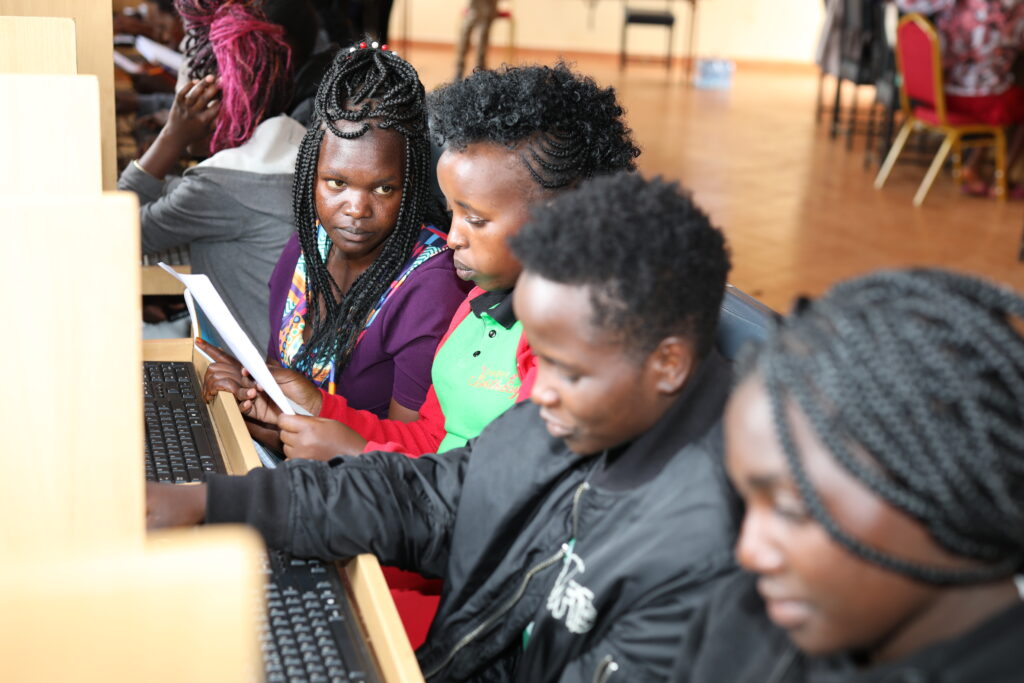To bridge the gap between education and employability, we provide our students and graduates with the technical skills and career training they need to succeed beyond our classrooms. At the same time, we’re addressing the digital divide that puts girls in rural communities at a steep disadvantage.
In Kenya, the K-12 academic year ends in December, but colleges, universities, and other tertiary education programs typically don’t begin until the following fall, leaving college-bound young adults with a “gap year” of sorts. At Kakenya’s Dream, we want to ensure our girls make the most of this time, so we offer a variety of skills and career trainings, plus volunteer and internship opportunities to prepare them for college and work life (more on that here).
Last month, we gathered 46 of our gap year students for a two-week computer, career, and entrepreneurship training on our KCE II campus. The entrepreneurial component is new this year — given the extremely oversaturated job market in Kenya, we hope that integrating entrepreneurship into our programming will give our girls some of the foundational knowledge necessary to eventually start their own businesses.
Each morning, students were taught computer literacy by an instructor from the nearby Maratha Enoosaen Computer Training Center. Lessons began with foundational skills like keyboard typing, internet navigation, and email correspondence. They then proceeded to practical crash courses on popular applications, which included creating and formatting documents in Microsoft Word, creating slide decks and graphics in PowerPoint, and analyzing graphs and data in Excel.

In Kenya’s increasingly digital economy, these skills are critical for young adults entering the job market. But due to the country’s digital divide, girls in rural communities like ours are at an extreme disadvantage: in Kenya, only 17% of the rural population has access to the internet, compared to 44% of the urban population. Moreover, women in Kenya are 39% less likely than men to have access to the internet, and 23% less likely to own a smartphone. Technical education for rural girls is essential for digital — and by extension, economic — inclusion.
Each afternoon, our gap year students transitioned to entrepreneurship training. Here, they learned to research, plan, and execute a business strategy. They covered every stage in detail, from market analysis to financial projection to organizational management. Students also presented their plans at the end of the training, which helped improve their marketing and public speaking skills. The training materials were supplied by our partner Girls Who Venture, an organization that provides entrepreneurship training and education to marginalized women around the world.
Over the course of the training, many girls mentioned that their parents already run their own small business, but without any formal entrepreneurship training. The girls were eager to bring everything they learned back to their families to help improve their businesses, which provides a perfect example of how youth education can permeate and empower entire communities.
At the end of the two-week program, we conducted surveys to get feedback and identify potential areas for improvement for future trainings. The biggest critique? Our gap year students wished the trainings were even longer and covered more topics, such as building skills and careers to mitigate climate change. We look forward to expanding our gap year programming in the future to further prepare our students for economic empowerment and success.
